 |
|||||||||||||||
"2001: A SPACE ODYSSEY" TIMELINE OF EVENTS (Notes concerning the creation of this timeline are at the conclusion)
4,000,000 B.C. Arrival of aliens at Earth. They teach Australopithecus to survive by using tools for hunting. Primary techniques involve alteration of neural pathways and hypnotic suggestion.
1969 A.D. Sun, Jul 20 Astronauts Neil Armstrong and Edwin Aldrin land Eagle on Moon at Mare Tranquilitatis.
1989 Feb-May U.S. Air Force conducts “Project Barsoom” which tests reactions of ordinary people to scenario that aliens are real and have made contact with Earth. Extremely negative reactions of participants lead to high classification of test results and creation of policy within U.S. government to suppress any knowledge of possible alien contact.
1992 Sun, Jan 12 HAL 9000, Production Unit 3, Artificial Intelligence Computer System becomes operational at HAL Communications plant in Urbana, Illinois [HAL Communications is A.I. subsidiary of IBM].
1994 Wed, May 25 Dedication of first United States Lunar Base. Clavius Base constructed by U.S. Astronomical Engineering Corp. [33rd anniversary of commitment by President Kennedy to land on Moon.]
1997 Mon, Nov 10 Construction initiation of Discovery 1 spacecraft in Earth orbit. Mission of 350-foot long Discovery 1 is to take a scientific team on a three year mission exploring Martian moons Phobos and Deimos. Launch scheduled for July 2002.
2001 Mon, Jan 1 First day of third millennium.
Fri, Jan 26 Germany becomes fourth space power to launch a nuclear weapons platform into Earth orbit. They join United States, Great Britain, and Russia.
Mon, Feb 12 Lunar Orbiter 10 discovers evidence of a magnetic disturbance in lunar southern hemisphere near crater Tycho during General Astronautical Map Survey M35/2. United States Astronautics Agency (USAA) assigns code name of “Tycho Magnetic Anomaly-1” (TMA-1) to disturbance and begins to organize a team to investigate phenomenon.
Mon, Apr 2 Survey Team from Clavius Base sets out to excavate TMA-1. Supported by Tycho Field Station.
Tue, Apr 3 Excavation begins under direction of Dr. Ralph Halvorsen.
Thu, Apr 12 08:43 EDT TMA-1 uncovered just after local sunset. TMA-1 is a black monolithic structure of unknown origin and purpose. It measures 1.25 ft wide x 5 ft across x 11.25 ft high. This is found to be ratios of squares of first three prime numbers. Clavius Base, under Presidential Directive, is immediately put under a radio blackout to suppress discovery.
Sat, Apr 14 Story “leaked” that personnel at Clavius Base are suffering from an unknown epidemic, possibly associated with return of a Martian rock sample for examination by base science team. Rumor is that ten people have died from this epidemic.
Fri, Apr 20 Geologists at TMA-1 site conclude that artifact was deliberately buried four million years ago.
Mon, Apr 23 Russian rocket bus has possible emergency near Clavius Base and requests immediate landing. Radio silence broken by base to deny landing request. [Rocket bus returns to Russian base safely.]
Wed, Apr 25 00:15 EDT Dr. Heywood R. Floyd, Chairman of National Council of Astronautics (NCA), assigned to Clavius Base by President at special briefing.
02:15 EDT Dr. Floyd launches from Kennedy Space Center on Pan Am Special Flight 3, Orion 3 shuttle, to Space Station 5. (Pilot Tynes, First Officer Ballard, Flight Attendant Simmons.) Transit time: 55 minutes.
03:10 EDT Orion 3 docks with Space Station 5. Dr. Floyd met by Nick Miller of Station Security.
03:20 EDT Dr. Floyd converses with Russian radio astronomy team returning from Tchalinko Station on the Moon. Scientists include Dr. Elena Kondakova, Dr. Svetlana Kalinan, Dr. Marina Stretyneva, and Dr. Andre Smyslov.
04:30 EDT Dr. Floyd departs Space Station 5 on Special Flight 14, Aries 1-B Lunar Transit Shuttle. (Pilot Bishop, First Officer Trumbull, Flight Attendants Rabideau and Howe.) Transit time: 25 hours.
Thu, Apr 26 05:30 EDT Aries 1-B lands at Clavius Base. [First flight allowed to land since blackout occurred April 12.] Dr. Floyd briefs personnel of Dr. Halvorsen’s team and prepares for rocket bus transit to Tycho (Pilot Gilliam, First Officer Alexander).
13:51 EDT Dr. Floyd, Dr. Halvorsen, and Dr. William “Bill” Michaels arrive at Tycho Field Station. Scientists and crew join Dr. Evans, chief of TMA-1 Survey Team, to enter excavation site.
14:12 EDT Local sunrise at excavation site. TMA-1 emits a single, powerful radio signal traced in direction of Jupiter through triangulation of reception from Deep Space Monitor 79, Mars Orbiter M15, High Inclination Probe 21, and Artificial Comet 5.
Sun, Aug 5 Official announcement of “Project Jupiter” and that mission of Discovery 1 has been altered from Martian exploration to goal of being first manned spacecraft to Jupiter. Since Discovery 1 was constructed for a much shorter mission, it is explained that astronauts will be put into hibernation after their mission is completed to await pickup by Discovery 2, which will follow to Jupiter in 2007. To achieve maximum conservation of supplies, three of five crew members will also spend outbound journey in hibernation.
There is no public correlation between this drastic mission profile change and still highly classified events that occurred on Moon just over three months previously. Scheduled launch in September 2002, return in 2009.
Mon, Oct 22 Crew selection announced for upcoming Discovery 1 flight to Jupiter: Commander: Dr. David L. Bowman, Jr. Pilot: Dr. Frank S. Poole Survey Team: Dr. Victor F. Kaminsky, Dr. John “Jack” R. Kimball, Dr. Charles E. Hunter. A.I. Computer: HAL 9000, Production Unit 3.
2002 Jan-Sep Discovery 1 crew undergo final training. Commander and Pilot train in Houston, Texas. Survey Team train separately in Huntsville, Alabama.
Mon, Sep 9 Survey Team launched from Kennedy Space Center to Space Station 5. They enter secure hibernation laboratory facility in newly opened second wheel of station.
Tue, Sep 10 Under high security, Survey Team transfers to Discovery 1 where they enter hibernaculums and undergo hibernation procedure. All spacecraft systems check out nominal and flight is given an authorization from Mission Control to proceed.
Thu, Sep 12 Commander and Pilot board Discovery 1, prepare for lunar checkout flight.
Fri, Sep 13 09:32 EDT Six primary propulsion system engines ignited and Discovery 1 embarks on test flight from Earth to Moon. Final checkout and preparations made for launch to Jupiter.
Sat, Sep 21 15:13 EDT Discovery 1 (Call sign: X-Ray Delta One) launches from lunar orbit to explore Jupiter system. Transit time: 257 days.
Sat, Oct 12 16:00 EDT Commander and Pilot conduct their first in-flight news conference. BBC 12 Reporter Martin Amor interviews crew when they are 78.2 million miles from Earth. 2003 Fri, Feb 14 23:30 EST Aboard Discovery 1, HAL 9000 A.I. computer predicts that AE-35 electronics unit that controls pointing of high-gain antenna at Earth for primary communications will fail within 72 hours. HAL recommends to Bowman that unit be replaced prior to failure.
Sat, Feb 15 07:30 EST Bowman discusses possible AE-35 malfunction with Poole during shift overlap.
09:00 EST Bowman goes off duty. Poole works up Extra-Vehicular Activity (EVA) plan and prepares communication for Mission Control.
20:13 EST Message sent to Mission Control. Distance to Earth is 284.9 million miles with a light speed delay of 25 minutes.
21:04 EST Mission Control responds that EVA plan is approved.
Sun, Feb 16 09:15 EST Bowman performs EVA to retrieve AE-35 unit using work pod B (Betty).
09:27 EST Closest approach to asteroid 7794. Consists of two co-orbiting components that are each less than 150 feet across. Discovery 1 passes within 900 miles at relative velocity of 80,000 mph.
11:41 EST Checkout of AE-35 unit at pod bay electronics bench reveals no fault present. Poole prepares full report for Mission Control.
19:30 EST Message sent to Mission Control with AE-35 test results.
20:49 EST Mission Control returns a finding that suggests an error in on board HAL 9000 computer.
20:55 EST Poole and Bowman confer in privacy of work pod B about consequences of deactivation if HAL proves to me malfunctioning. Even though all communications with pod are terminated, HAL is able to read lips of crew through pod viewport. HAL decides to take action to prevent deactivation.
Mon, Feb 17 08:45 EST Poole performs EVA to replace original AE-35 unit using work pod B to discover if unit will fail and if HAL has provided erroneous data.
09:16 EST HAL shuts down communications between work pod and Discovery 1, then murders Poole using pod manipulators to cut air supply hose and send him and pod tumbling into deep space.
09:20 EST Bowman attempts rescue of Poole using work pod C (Clara). Rendezvous with Poole takes 25 minutes. At completion of retrieval, pod is approximately 35 miles away from Discovery 1.
09:51 EST HAL cuts life support to hibernaculums, murdering Kaminsky, Kimball, and Hunter.
10:22 EST Returning to Discovery 1 with body of Poole, Bowman is refused access to pod bay by HAL. Bowman reenters through manual emergency airlock.
10:50 EST Bowman enters Logic Memory Core and disconnects HAL’s higher brain functions. At completion of termination activity, final conscious act by HAL is to activate a pre-recorded message from Dr. Floyd. Message reveals that true nature of Discovery 1 mission to Jupiter was to trace signal sent from TMA-1 in hopes of making contact with extraterrestrial intelligence. [Later analysis by NCA “Project Jupiter” Review Board shows that decision by NCA to keep real mission secret from primary crew caused a programming conflict within HAL. This was due to computer’s basic programming that does not allow it to disseminate incorrect data (i.e., to lie or mislead). HAL was forced to do both whenever mission is discussed. This human-induced conflict within HAL lead directly to its malfunction and death of four crewmembers.]
Sat, Jun 7 Arrival in Jupiter space. Discovery 1 enters Jovian orbit.
Fri, Jun 13 Bowman takes work pod A (Anna) to investigate giant artifact similar in form to TMA-1, found in orbit near Jupiter’s moon Io. Monolith measures 212 ft wide x 848 ft across x 1908 ft high. Bowman enters Star Gate and is transported 20,000 light years across Milky Way to point near galactic core. Aliens transform Bowman into Star Child where he returns to Earth and prevents superpower war by exploding orbital nuclear weapons platforms.
* * * * *
“2001: A SPACE ODYSSEY” TIMELINE NOTES
Creating a specific timeline for events portrayed in the movie “2001: A Space Odyssey” has always been difficult. Except for the title, there is only one place in the movie where a specific date is given (and that is well hidden!). Years when events supposedly occurred are stated in Peter Hyams sequel “2010.” In this movie he states that the monolith was discovered in late 1999 and the Discovery 1 mission occurred 18 months later in 2001. Since he got other information wrong (such as discovering the Tycho Magnetic Anomaly in the Sea of Tranquility) I have chosen to ignore any references from that movie.
In one of the first drafts of the “2001” shooting script, dated December 1965 (just prior to the start of actual movie production), it is stated that TMA-1 was uncovered at 08:43 ET on April 12, 2001, just after local sunset at the excavation site. Since this is the first date actually set into print, I have chosen this marker as the true start point for creating this timeline. This date is also consistent with the one place in the movie where a date can be clearly seen. While traveling on the Moon Bus to the excavation site, Dr. Floyd looks over several photographs and geomagnetic plots of TMA-1. On one of the photographs, the date of February 12, 2001 (021201) clearly appears. This discovery date for TMA-1 is consistent with the April 12, 2001 date for the actual excavation of the monolith, as set down in the script.
I believe that finding the monolith in the year 2001 was the true intent of Kubrick and Clarke when the script was originally written. In later novels in the series, even Clarke admits that events are not always consistent, so I have decided that in constructing this timeline, it should reflect the events in the movie and novel of “2001: A Space Odyssey” alone and ignore later novels and the movie “2010.”
In the novel, Clarke fills in many pieces of the timeline puzzle which all then flow from that original script date, by telling the reader exactly how long the Orion 3 flight took, how long to get to the Moon, etc. From this, other dates, and even times, can be inferred to great accuracy.
Calculations on when events occurred during the Discovery 1 mission are made using references supplied in the movie. Light speed delay on transmissions between the BBC and the crew, and later between Mission Control and the crew, gives distance and date information during the Jupiter mission. These include very specific time references for receipt of transmissions during the AE-35 replacement operations.
* * * * *
There are some contradictions (as would be expected) between the novel, the script, and the movie, so in order to create the most accurate timeline possible, I have had to set priorities to the information I uncovered. The first priority is the movie itself, followed by the novel, followed by the script. This is why, since the movie and novel do not state any specific dates on which to base a timeline (except for the TMA-1 photograph), the original script comes into play. Whenever something is stated on screen, that is the absolute statement of fact for this timeline (unless it reflects a contradiction from the movie, such as when the designations of the space pods change). An illustration of this is that the Jupiter mission is shown in the movie to be three weeks underway, 18 months after the monolith sends its signal. In the script it showed that time as being only 14 months, so 18 months from the movie stands. This is also evident in that the movie has the Discovery 1 going to Jupiter, while the spacecraft in the novel goes to Saturn. Jupiter wins.
* * * * *
The following list specifies all the information used to complete the timeline that is not directly taken from “2001” source material and which I had to fill in from the historical record or my own imagination:
— The date of the first lunar landing is obviously taken from fact. Remember that the movie was filmed and the novel written years prior to the first lunar landing. (The movie started production on December 29, 1965 and was released on April 4, 1968.)
— The months that “Project Barsoom” were conducted, the date of the dedication of Clavius Base, and the date of the start of “Project Jupiter” are supposition. The years are given or easily inferred in the novel.
— The names of the crew of the Aries 1-B and Moon Bus are imaginary, as is that of some of the Russian scientists and the chief of the TMA-1 Survey Team.
— Some liberty was taken with my interpretation of the original mission of Discovery 1 (Martian instead of Jovian exploration). It was never explained why the ship had been designed for a one way Jupiter mission. A design should be compatible with a safe return of the crew. However, if the mission changed from Mars to Jupiter after the design was frozen, then it makes sense.
— The dates of events of the Discovery 1 mission are inferred from the fact that the mission was launched just over 17 months following the TMA-1 transmission, as stated in the movie, and the chronology of events written in the novel as far as when, during the mission, that events occurred.
— Additional details about dates and times are inferred from comments within the movie and include transmission times and light speed delays to calculate distance traveled and how far into the mission certain events occur.
All other events in the timeline are based on specific statements in the movie or novel.
Michelle Evans January 14, 2001
XXXX |
|||||||||||||
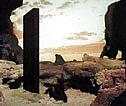 |
|||||||||||||
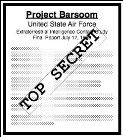 |
|||||||||||||
 |
|||||||||||||
 |
|||||||||||||
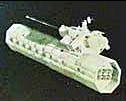 |
|||||||||||||
 |
|||||||||||||
 |
|||||||||||||
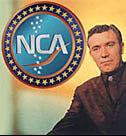 |
|||||||||||||
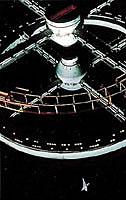 |
|||||||||||||
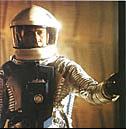 |
|||||||||||||
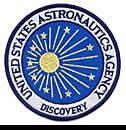 |
|||||||||||||
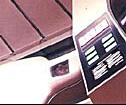 |
|||||||||||||
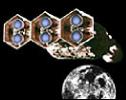 |
|||||||||||||
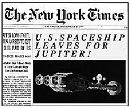 |
|||||||||||||
 |
|||||||||||||
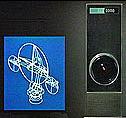 |
|||||||||||||
 |
|||||||||||||
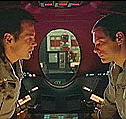 |
|||||||||||||
 |
|||||||||||||
 |
|||||||||||||
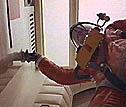 |
|||||||||||||
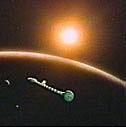 |
|||||||||||||